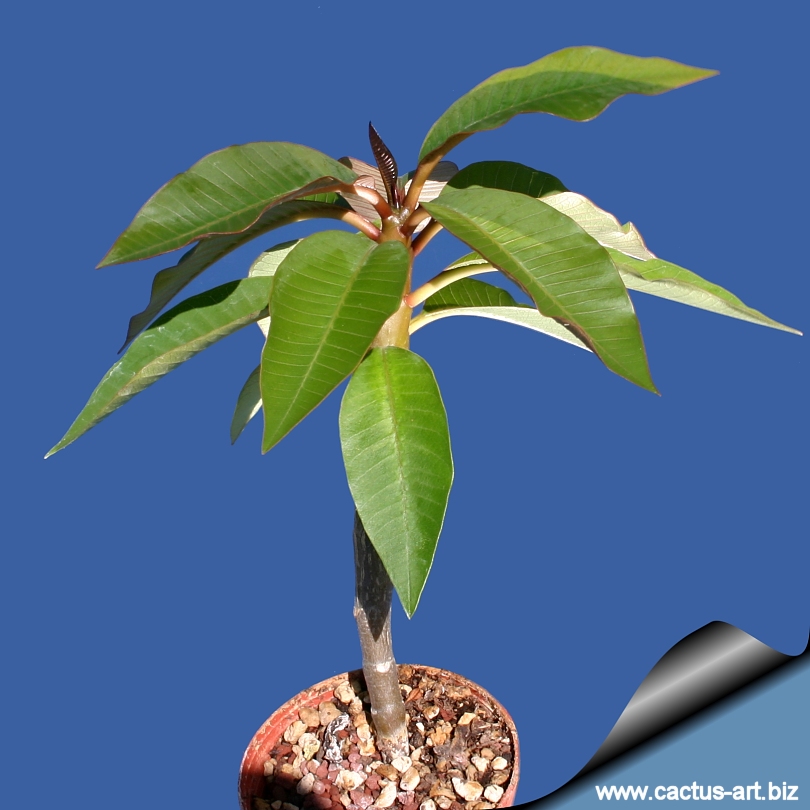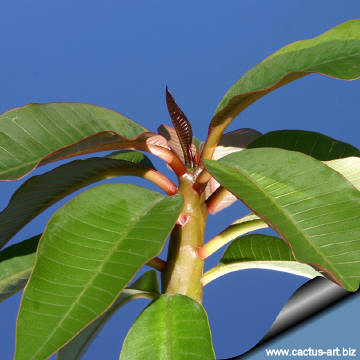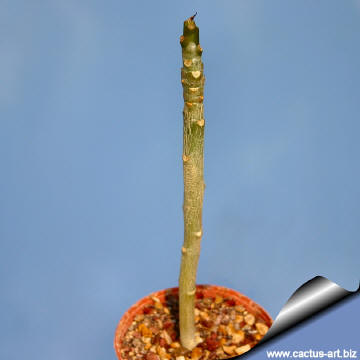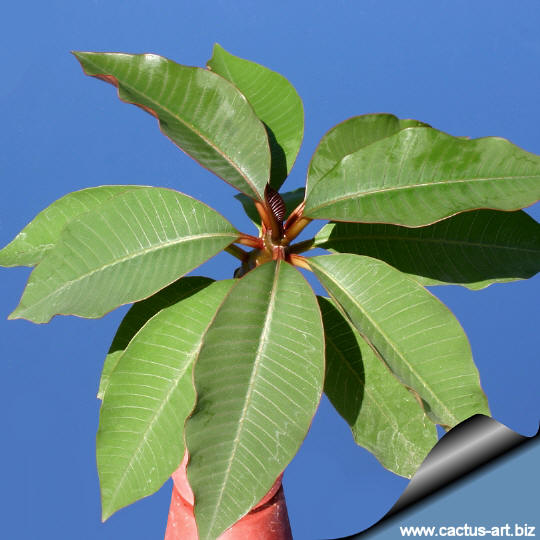|
|
|

Tropical plumerias are among the best-loved plant in the world that
yield beautiful flowers and fragrance.
|
|
Description: Mainly deciduous fast-growing,
vigorous shrubs and trees that produces colourful flowers. There are
hundreds of cultivars available that differ in flower colour and size
and all of them are spectacular. Flower colours include pink, red,
white, and yellow.
Stem: Swollen somewhat succulent, being deciduous, plumerias
reveal their thick, blunt branches from December to March (the dry
season) when bare of leaves. Although the branches are muscular in
appearance they tend to be weak and easily broken. When a limb is broken
or the bark is cut, the tree bleeds white latex which is typical of
members of the Apocyannaceae family.
Leaves: Large leathery, that appear in spring and are 15 to 50 cm
long by 3 to 7,5 cm wide depending on species or selection. Medium green
and oblong in shape they are arranged alternately on the squat branches.
Flowers: Deliciously fragrant, delicately sculpted, waxy, about
5-10 cm across and consist of five petals arranged in a tubular funnel
shape. Flower colour is dependent on the cultivar. Plumeria
flowers are most fragrant at night in order to lure sphinx moths to
pollinate them. The flowers have no nectar, and simply dupe their
pollinators. The moths inadvertently pollinate them by transferring
pollen from flower to flower in their fruitless search for nectar.
Fruit: Flowers are followed by dark leathery double seed pods up
to 30 cm in length.
|
 |
 |
|


Advertising
|
|
|
|
|
Family: Apocynaceae
Scientific name: Plumeria
hybrids
Origin:
Garden origin (Nursery
produced cultivars)
Habitat: Plumeria is widely cultivated as ornamental in
all tropical areas of the world.
Common English Names: "Frangipani". The common
name "Frangipani" comes from an Italian noble family, a
sixteenth-century marquess of which invented a plumeria-scented perfume.
Etymology: The genus, originally spelled Plumiera, is named in
honor of the seventeenth-century French botanist Charles Plumier, who
traveled to the New World documenting many plant and animal species.
|
|
|
|

Cultivation: These
trees are tolerant and easy to grow, but prefer rich garden soils. They
are also easy to bring into bloom, provided their basic needs are met,
including regular feeding with a fertilizer high in phosphorous and
potassium, generous watering when the soil is dry, but don't overwater
or the trunks will rot. It prefers full sun or half a day or more of
sun. Remember to always water your plants well before fertilizing.
Plumeria drops its leaves when temperatures drop below 10°C. Few
insect pests will bother your Plumeria, and those that do can
generally be rinsed off with a stiff spray of water. In regions with
cold winters, plumerias can be grown in containers and brought indoors
when the weather cools in autumn. Potting mixes for plumerias should
contain organic matter and drainage material. Plumerias should be
repotted each year, they do not like to be root bound. Each spring is a
good time to repot. It is even possible to take them out of their pots
in November as they are becoming dormant and store them bare root in a
warm place. Then pot them up with fresh mix in the spring. Plumerias
normally require little pruning, but any shaping should be done in
spring.
Propagation: By cuttings in spring.
"Plumeria" species are easily propagated by taking a cutting of leafless
stem tips and allowing latex sap dry, then dust with rooting hormone
powder and plant in damp sand.
Point of interest: The beautiful gorgeous flowers are visually striking and the fragrance
is unforgettable. This is the flower from which Hawiians make their
famous floral necklaces called leis.
NOTE: Plumeria is related to the Oleander,
Nerium oleander, and both possess poisonous, milky sap. |
|